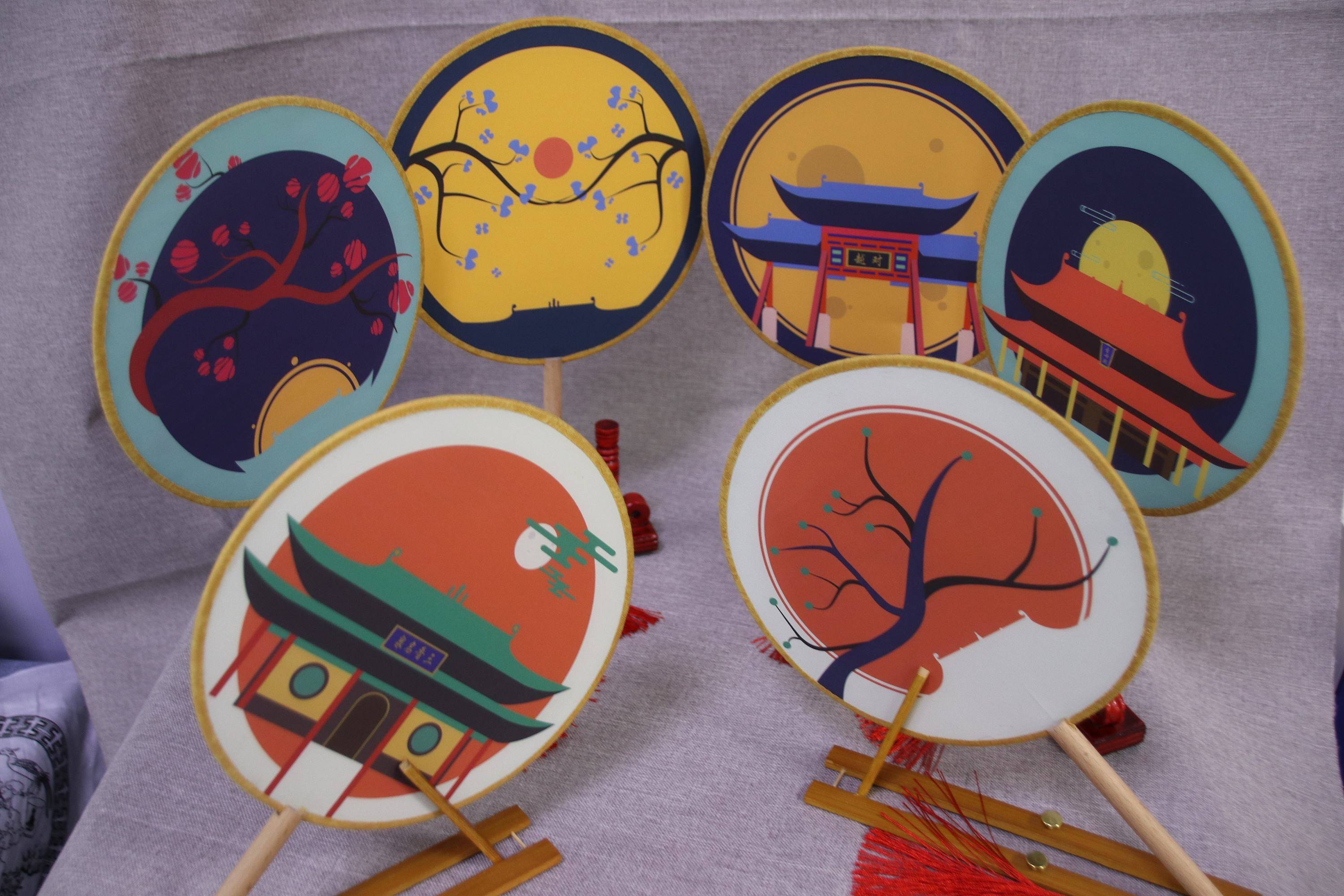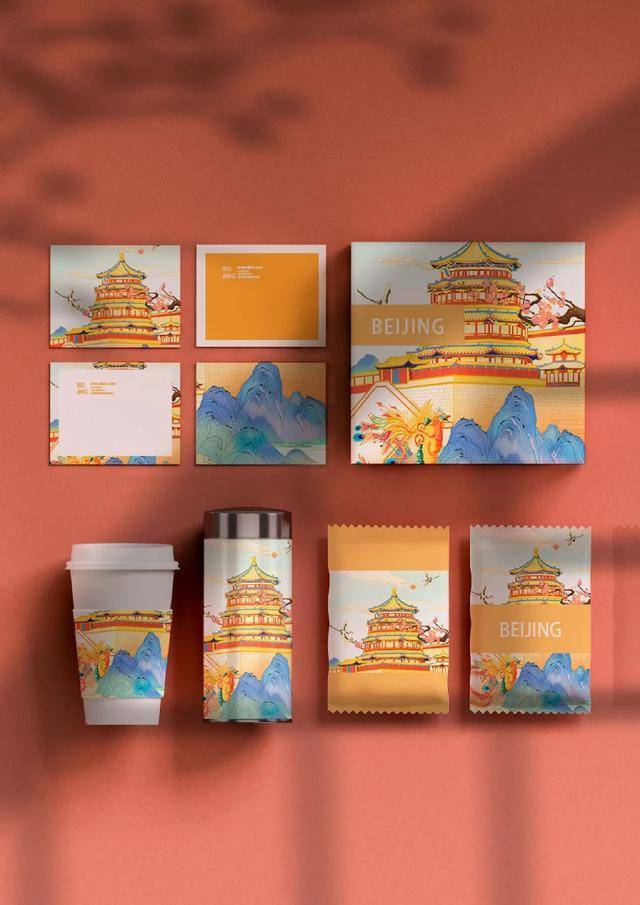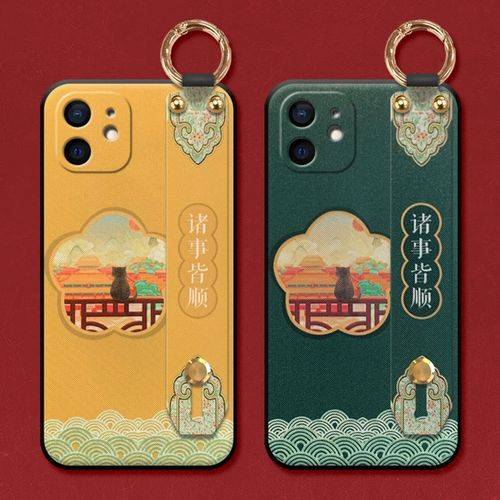Iconada.tv 愛墾 網
文化有根 創意是伴 Bridging Creativity
Comment
-
Comment by 旅遊 庫 on August 7, 2023 at 10:16pm
-
Bluecoat, Liverpool 利物浦藍外套文創園區
(一)特殊性性
Bluecoat 位於利物浦市中心的 Ropewalks, 一個依原先工廠屬性而發展出來的街區,在利物浦港興盛時期因早期工人聚集,商店錦簇,是市區交通商業的發展重心。如今這裡大部分建築的風格考究,又身處娛樂氛圍中,因而吸引了許多創意產業進駐。Bluecoat 也會時常舉辦帶狀的活動和節慶,持續將藝術文化的資訊及新議題帶給民眾。Bluecoat 有豐富的藝術資源來做推廣,再加上有獨立的零售店和創意團隊協助來和教育機構及一半民眾作互動,已成為社區中重要的集會場所,更是 Ropewalks 濃厚另類文化氣息中不可或缺的角色。(二)管理政策
1. 再利用建築或區域
Bluecoat 在利物浦的價值除了本身建築物為利物浦市區最悠久的建築物之一以外,更重要的是它後來在 2008 年被重新翻修打造,利用為藝術、音樂和多元文化及中的園區,在轉型過程中帶頭形塑當地社區並成為了一個「新」社區。建立在利物浦屬一屬二的歷史遺跡中,Bluecoat 是一個複合式的創意聚落(creative hub),包含了四個展覽空間、酒吧、餐廳、樂團演奏場地和表演空間等,更秉持著開放給每一個人來休閒娛樂和創作交流的理念來和居民、遊客及藝術家交流。Bluecoat 大門前的廣場和中庭儼然已成為當地居民進行休閒娛樂的好地方,逢年過節或是有活動時,這裡是重要的舉辦場所。此種以藝術和文化作為更新所帶來的影響,不只是地方有別於都市其他部分的生活環境,更重要的是地區與外地,甚至是國際之間的交流。
-
Comment by 旅遊 庫 on August 7, 2023 at 10:11pm
-
2. 企業精神
作為藝文創園區,Bluecoat 提供許多空間給不同的藝術類型,像是表演藝術、展覽、多媒體展、藝術家工作室和互動教室等,更提供了藝術家有展示與販賣自己作品的地方。從 Bluecoat 內部的行銷來看,它不僅位置理想居於鬧區,歷史悠久且軟硬體設施的齊全,很適合藝術家所需要的創作空間和人潮的吸引。除了有關於建築本身的行程之外,從與 Bluecoat 管理者的詢問得知,園區以出租空間的方式給藝術家,提供藝術家所需要發展空間。不定期更新的展覽也能讓遊客或居民持續來園區造訪,在開放空間舉辦的音樂會或市集更是沒有隔閡的將人們吸引到園區內,增加遊客進入 Bluecoat 的機會。
另外,Bluecoat 也致力於與學校和一般大眾作互動,Bluecoat 的管理者就表示園區提供了大量的體驗機會,針對不同的客群有不同的課程,讓對藝術陌生或平時沒有機會的人們可以在園區內得到自由發揮的機會,讓體驗者對於藝術越來越熟悉,並刺激藝術在社區內的發展。3. 帶動地方發展
在市政府的行銷計劃中,Bluecoat 和其所屬的街區 Ropewalks 一直都是都市計劃中重要的發展地區。利物浦於 2008 成為歐洲文化之都時,Bluecoat 和其他文創園區就擔任舉辦活動、訂定籌備計劃等的重要單位,而從那時至今此街區儼然已成為市中心最重要的地方,也是商業、藝術、觀光等集中的地方。Bluecoat 的新面貌給自己帶來了競爭上的優勢,也在利物浦市政廳和利物浦城市委員會等公部門的大力支持下形成了獨特的,有別於其他商業聚落的特色街區。大量的藝術作品和音樂表演等輸出,也吸引了大批遊客和投資者到 Ropewalks。大型活動或是節慶也一定有 Bluecoat 和其他關聯的文創單位的參與,不僅藉機打出園區的知名度,更是園區內藝術家發揮創意的好機會,也更因這樣的活動能夠吸引到更多國際的人才來到利物浦。
藝術的匯集中心使大量藝術創作者得以在此地方找到發展的機會,更可以和當地的藝術家有所交流與合作,激發藝術界的新潮流。這種藝術聚落的作法,一方面能夠增加當地居民本身對於藝術作品和藝文活動消費的文化資本,一方面也能夠藉由機構和組織及藝術家們的合作和聯盟,形成所謂的合作關係,帶給地方更多的經濟發展潛力,更提升了地方的生活品質,更帶動了地方社區的發展。這樣藝術的進駐,實現在街上的公共藝術,隨處可見的活動宣傳和藝術家所開的商店,將利物浦從一個世界知名海港變身為著名的文化都市。(下續)
-
Comment by 旅遊 庫 on August 6, 2023 at 10:16pm
-
蘇安婷〈英國城市文創產業及文創觀光發展〉(續)文創與觀光:
伯明罕幾世紀以來以重工業大城之姿在英國立足。然而在二十世紀末經濟蕭條及地位被其他城市取代之後,市政府需要另借他法,以其他資源來為城市做轉型以維持城市經濟的水準。在這次實習當中拜訪了負責行銷伯明罕市的單位Marketing Birmingham,得知伯明罕市針對城市行銷的計畫是以會議觀光為首,而文化之於城市發展整體來說,尚未成為帶動城市再生的主要動力。
然而,在親自造訪過 Jewellery Quarter 之後,看到了文化創意所能表現的不僅僅是文化歷史上在伯明罕的重要性,而是以商業和文創產業來看,它做為一個人才集中地和文化產品的分散地,擁有一定的經濟效益和文化推廣創新的潛力。Jewellery Quarter近幾年來已成為一個文化複合式園區,希望以藝術、珠寶業、餐飲、飯店、表演藝術、節慶、及博物館等各方面來多角經營園區,更希望以這樣的經濟條件來維持社區硬體設施並提供新的軟體。也因為這樣的目標,觀光成為園區非常重要的
經濟收入來源。
園區內不乏到當地購買珠寶的人,也有許多伯明罕市居民、學校團體和其他地方來的遊客。園區內可以看到藝術家與文創產品之間的關係緊密,文創產品的販賣也能在博物館的展示廳內看到。以文創園區的形式將文化商品集中在一區域,能夠方便消費者在一地方進行多種不同的文化活動,而這樣的觀光消費能夠連帶地將周邊相關產業帶入園區,像是餐飲和飯店業等。文化產品除了普通的實質商品之外,在後現代觀光中更有價值的是體驗經濟的取得。
動手創作或是觀看任何創作過程都是觀光客有另一層內化體驗的機會,而這種體驗對於觀光客和當下過程之間的交流,是文創產業在現代觀光中最重要並最具吸引力的地方。也就是 Jewellery Quarter 中的文創產業為觀光帶來的是另一種消費的方式,而觀光也是使 Jewellery Quarter 的文化影響力外溢的催化劑。
Jewellery Quarter在伯明罕的身分應不再只是單純的加工製造區,而是在它慢慢轉型的過程中將投資於大型建築和節慶的資金投入 Jewellery Quarter 的行銷和推廣,讓文創和社區間做更緊密的結合,使文化和藝術再加上歷史成為地方和市區與過去和未來接軌的媒介,文創產業也能以體驗經濟和象徵經濟(symbolic economy)的方向來永續發展伯明罕市的城市願景。
另一方面,Bluecoat 位在利物浦市中心的購物區,地點優良,人潮熙攘,讓它在居民和觀光客的每次徒步經驗中留下印象。在利物浦的期間,就時常經過Bluecoat,並在實地造訪時深刻感受到 Bluecoat 在當地社區中所扮演的角色以及它為地方觀光所帶來的變化。大量的藝術作品和音樂表演等輸出,也吸引了大批遊客和當地居民到 Bluecoat。這些活動皆採開放的方式,將音樂藝術和生活簡單的連在一起,更能讓觀光客更輕鬆地融入當地的氣氛當中。
更重要的是,Bluecoat還有給當地居民和遊客的體驗課程,內容包羅萬象,以讓體驗者親手做的方式做出屬於自己的作品。再一次的,這樣子的體驗對於參與的人來說,除了有成就感之外,更將藝術以容易接觸的方式傳達到體驗者,以這樣無形的方式一邊宣傳了利物浦文創園區,一邊將藝術向園區以外傳播。Bluecoat 有豐富的藝術資源來作推廣,再加上有獨立的零售店和創意團隊協助,使得 Bluecoat 的活動在舉辦上不僅能鼓勵創作者的生產,周邊商品的販賣也能帶動消費行為,進而提供運作上所需要的資金。(下續)
-
Comment by 旅遊 庫 on August 6, 2023 at 10:16pm
-
(續上)從 Bluecoat 管理者的交談得知整體的運作方式是由這些表演藝術和活動來得到經費,產品的輸出對於它們很重要。
Bluecoat 擁有現在文創園區的樣貌,對於觀光客來說,是在 2008 年之後,到利物浦觀光成為造訪創意城市的代名詞。Bluecoat 和其它創意園區也順勢成為觀光客經常因活動和節慶而造訪的地方。對於當地居民來說,文創園區的興起和藝術及節慶在地方的出現,使得生活由這兩個英國城市的文創產業和文創觀光例子來看,可以發現,以文化作為都市更新的出發點,再加上創意發想以及不同的表現形式,能讓整個地方更適合居住也更吸引人。
將「文化聚落(cultural quarters)」的觀念注入複合式藝術中心,不僅進駐了各地來的藝術家,更鼓勵地方民眾對於藝術的參與,將地方和部門結合。文化帶動的都市計劃使城市成為一個可消費的對象,消費其中的商品、服務、生活經驗和最重要的―城市的文化。
地方政府應該了解致力於保存歷史建築和地區發展之間的協調才能使後現代城市中「園區(quarter)」概念所含的特殊性長久保存下來,以吸引更多的觀光客(Pollard, 2004)。將文化創意帶到地方社區,能藉此將地方形象重塑,連帶地從基層開始將城市轉型。這一種以文創園區為帶動地方發展的文化政策策略,能落實在社區中,成為一種品味與經驗,給居民和遊客一起分享,更帶出具有經濟效益和觀光水準的景點,永續經營的目標更能在長期投資和培養之下,以具有規劃的遠景來達成。
Bagwell, S. (2008), Creative clusters and city growth, Creative Industries Journal, 1(1), 31-46, doi: L10.1386/cij.1.1.31/1
Birmingham City Council. (2011). Big City Plan. Retrieved from http://bigcityplan.birmingham.gov.uk/wp-content/uploads/2010/08/Big....
Bradburne, J. (2003). The museum time bomb: Overbuilt, overtraded, overdrawn. Retrieved from http://www.foorsofperception.com/features
Porter, M. E. (1995), Clusters and the new economic competition, Harvard Business
Review, 76, 77-90.
Pollard, J. S. (2004). From industrial district to 'urban village'? Manufacturing, money and consumption in Birmingham's Jewellery Quarter. Urban Studies, 41(1), 173-193.
Richards, G., & Wilson, J. (2005). Developing creativity in tourist experiences: A solution to the serial reproduction of culture? Tourism Management, 27(6), 1209-1223.
Ray, C. (1998). Culture, intellectual property and territorial rural development. Sociologia Ruralis, 38, 3-20.
Solvell, O., Lindquist, G., and Ketels, C. (2003). The Cluster Initiative Greenbook, Stockholm: Ivory Tower AB.
Zukin, S. (1995). The culture of cities, Oxford: Blackwell.
Zukin, S. (2004, September). Dialogue on urban cultures: Globalization and culture in an urbanizing world, World Urban Forum, Symposium conducted at the meeting of UN-HABITAT, Barcelona
(見《大英風華,精焠文化》第1章〈英國城市文創產業及文創觀光發展―以Jewellery Quarter 和 Bluecoat 為例〉
-
Comment by 旅遊 庫 on July 22, 2023 at 11:01am
-
後現代主義視角下的遊客
【摘要】隨着國民經濟的不斷發展, 人們出遊經驗的不斷豐富, 傳統的大衆旅遊很難能滿足人們追求個性化、注重情感和體驗的旅遊需求。極具個性化、情感化、體驗化、不斷發展的後現代旅遊逐漸受到人們的關注, 而起步不久但發展迅速的民宿旅遊無疑是當前熱度較高的後現代旅遊形式之一。
在市場的推動下, 民宿數量不斷增長, 越來越多的遊客以體驗而不是觀光、度假或其他的原因爲主要因素去民宿開展旅遊活動。民宿遊作爲集小衆化、個性化、體驗化、情感化、日常化爲一體的新興旅遊形式, 越來越多的地區將目標投向民宿遊客。
後現代主義的研究起步較早, 並在多個領域産生影響, 但後現代旅遊興起時間短, 現有研究多集中在後現代旅遊的定義、特徵上, 對後現代旅遊的旅遊形式、旅遊者行爲等方面研究較少。
同時民宿旅遊作爲鄉村旅遊延伸, 現有的研究主要集中在民宿業的發展、影響, 經營管理者的態度、行爲, 遊客體驗, 市場營銷, 主客關係等方面, 對民宿遊客行爲的系統研究較少, 本文在系統的梳理和闡述國內外相關研究和理論、實踐成果的基礎上, 擬通過後現代主義視角對民宿遊客的旅遊動機、行爲、滿意度等進行深入研究, 找出其特徵, 以此來豐富後現代旅遊以及民宿遊客行爲的的研究內容。
據此本論文共分爲六章內容, 如下:
第一章介紹了本文的選題背景、研究意義、研究內容與方法、技術路線圖。
第二章的內容梳理、總結、述評了國內國外相關學者的研究內容、方法、結論和不足。尋找各主體之間的交織點,爲後續的實証研究提供相關理論基礎。
第三章至第五章爲本文的主體內容, 介紹了案例地情況, 數據獲取、調研、分析過程, 樣本人口學屬性信息, 對德清民宿遊客出遊動機、信息獲取渠道、預定行爲、遊伴選擇、遊中活動、滿意度、再宿意願等方面進行分析, 指出德清民宿遊客的後現代主義行爲特徵。以及人口學屬性對動機、活動選擇的差異性影響。第六章對本文的研究內容進行總結概括, 總結研究。
結論, 指出本研究的不足之處, 同時對德清民宿的發展提出建議。本文主要研究結論如下:
(1)德清民宿遊客中女性較多, 年齡較小, 但學曆水平總體較高, 月收入大多處於中高水平,長三角城市爲主要客源地。同時,大部分遊客選擇與親朋好友一起出遊,出遊時長較短。
(2)遊客獲取德清民宿的信息多以親朋好友介紹爲主,口碑信息非常重要, 同時結合現代移動通訊工具及社交軟件獲取信息及預定民宿。
(3)想要紓解壓力、放鬆身心成爲遊客們的主要動機,增進同行親友的感情,提昇家庭樂趣、民宿週邊有優美的自然景色、增加自己的旅遊經歷、想要暫離一成不變的生活、想要滿足對休閒生活的渴望等動機也佔有很大的比率。
(4)不同的人口屬性對遊客的動機、活動選擇具有一定的影響,動機及活動選擇整體凸顯後現代旅遊注重個性化、情感交流、個體體驗的特徵。
(5)德清民宿遊客的總體滿意程度均值爲4.01,達到滿意, 但依然受遊客的人口學屬性影響,高學歷、管理者、空巢或單身階段、公務人員的滿意度較高。衛生條件和舒適度被認爲是最重要的因素, 但最滿意的則是身心愉悅, 交通情況的滿意度較差, 可進入性差, 停車難等是遊客反映的主要問題; 但再宿意願和推薦意願都較高。(原題:後現代主義視角下浙江德清民宿遊客行爲研究 http://cnki.cqgmy.edu.cn)The post-tourist or post-modern tourist is a consumer who embraces openly, but with some irony, the increasingly inauthentic, commercialised and simulated experiences offered by the tourism industry. The concept of the post-tourist has developed in response to consumer attitudes and preferences in the post-modern era.
The concept of the post-tourist has developed in response to consumer attitudes and preferences in the post-modern era. The term seems to have been coined by Feifer (1985), and has been used subsequently by Urry (1990/2002), Rojek (1997) and others. The post-modern world is characterised by globalisation, hyper-consumerism, the experience economy and new developments in technology. Consumers have numerous choices and possibilities, and often undertake seemingly incompatible activities simultaneously in order to capitalise on this array of opportunities. Postmodern tourism has therefore been described as a form of ‘pastiche tourism’ (Hollinshead, 1997: 192) or ‘collage tourism’ (Rojek, 1997: 62). (Post-Tourism,Melanie Smith eta)
延續閱讀:
蔣磊·“再地方化”与“詩性資本”———論消費時代的特産
-
Comment by 旅遊 庫 on February 14, 2023 at 10:14am
-
「泰」開心:泰國盼中國遊客回歸助旅遊業復蘇
「這是新冠疫情後第一次出國旅遊,非常興奮,也非常開心,來的路上一切順利,到泰國後處處都能感受到當地人的熱情和對中國人的歡迎。」正在泰國旅行的中國遊客劉玲玲興奮地告訴新華社記者。劉玲玲一家四口來自武漢,今年選擇在泰國度過中國農曆春節。隨著中國不斷優化疫情防控政策、有序恢復公民出境旅遊,泰國水清沙白的海灘、華麗輝煌的寺廟、現代時尚的購物中心正迎來中國遊客回歸。
(Photo: Varuth Hirunyatheb)
春節期間,泰國首都曼谷唐人街張燈結彩,節日氣氛濃厚。曼谷幾大購物中心的春節裝飾也各具特色,吸引眾多遊客拍照留念。除了曼谷,普吉、北欖、宋卡和叻武等多地也舉辦了春節慶祝活動。
「每年春節都是旅遊旺季。中國遊客一直是我們的主要客源。今年中國遊客回歸了,我們為春節做了充足的準備,相信今年生意能恢復到疫情前。」曼谷唐人街一家酒店的廚師納塔蓬說。
旅遊業是泰國支柱產業之一,而中國遊客是泰國旅遊業的重要客源。疫情暴發之前,中國遊客占泰國全年入境遊客總數逾四分之一。然而,疫情給旅遊業造成了巨大沖擊,泰國經濟和就業承受巨大壓力。相關從業者期盼更多中國遊客回歸,為旅遊業和經濟復蘇增添動力。
1月9日,泰國副總理兼公共衛生部長阿努廷等官員專程前往機場,打出「中泰一家親」標語,為中國優化出入境防疫政策後首批抵達泰國的旅客送上鮮花和紀念品。
「經歷疫情後,我們更加意識到中國遊客的重要性。」泰中旅遊總商會副理事長差那班在接受新華社記者專訪時說,中國遊客為泰國經濟、社會注入了活力。如今中國遊客的回歸是「大好喜事」,旅遊和服務機構正在做各方面準備,包括精耕細分市場、提升產品品質和服務質量、提升服務人員服務水平等。
差那班預計,後續還會有更多中國遊客赴泰旅遊觀光。
按泰國政府估算,今年將會有700萬至1000萬中國遊客入境。泰國央行貨幣政策委員會25日發布報告指出,隨著中國遊客回歸,泰國旅遊業將呈現加快復蘇態勢,而旅遊業和居民消費的持續恢復將支撐泰國經濟增長。(2023-01-31 新華社曼谷 1月30日電 [記者王亞光、郭鑫惠] 來源: 新華每日電訊7版)
感受泰国魅力,更多精彩照片藏在这里~
-
Comment by 旅遊 庫 on October 10, 2022 at 11:15am
-
旅遊文創産品:可持續的「創造力」(原題:旅遊文創産品如何能實現可持續的「創造力」?)
原標題:旅遊文創産品如何能實現可持續的「創造力」?
近年來,隨著人們精神追求的提昇,旅遊文創産品逐漸興起,愈來愈多的人投身到文創産品的設計開發中。作爲一個歷史悠久,有著肥沃的文化土壤的國家,中國的旅遊文創發展之路如何呢?下面就來談一談中國旅遊業的文創發展現狀及未來旅遊業文創的發展思路。
首先文創産品是什麼呢?文創産品又能給旅遊産業帶來什麼作用?
文化創意産品(文創産品)是藝術衍生品的一種,通過設計者自己對於文化的理解,將原生藝術品的文化元素與産品本身的創意相結合,形成的一種新型文化創意産品。説簡單點,文創産品就是一個創意通過賦予其價值使之産品化。文化旅遊紀唸品、辦公用品、家居日用品、科技日用造型設計、工藝品等都屬於文創産品一類。

在旅遊領域,文創産品是豐富旅遊體驗和提昇旅遊檔次的主要途徑。獨特的文創産品,不僅能夠提昇景區的品牌形象,而且在某種程度上也能擴大景區的傳播範圍。特別是現在隨著互聯網流量紅利逐漸消失,獲客成本不斷增加,中小城市旅遊區及小型景區更是面臨著渠道短缺的困擾。所以發展文創産業應是旅遊業發展過程中的一大趨勢。
作爲旅遊區重要角色的文創産業,目前現狀如何呢?
一、文創産業發展加速,國家政策的強力支持
1、2017年中國發改委公佈了《關於實施旅遊休閒重大工程的通知》,並在其中旗幟鮮明地提出了"加快旅遊産品開發,培育新興旅遊業態,提昇旅遊産業質量,滿足消費昇級帶來個性化、休閒性、文化性的體驗需求"的要求。2、2018國家旅遊局與文化部合并,正式組建了文化和旅遊部,並且不再保留原文化部和國家旅遊局。對原來的旅遊局而言,新的文化和旅遊部,是原有基礎之上的一次昇格——從直屬機構一下變成了組成部門,從副部級也昇格爲正部級。對原來的文化部而言,是行政效能上的一次拓寬——從純粹的文化到給文化賦予載體,從偏向事業工作到事業和産業並進。
二、旅遊文創發展不均衡,同質化、低端化、地攤化嚴重據統計,旅遊購物在歐美國家佔旅遊業收入的50%到60%,在亞洲發達國家佔40%以上,而在中國目前隻佔28%,國內外遊客對旅遊商品的滿意度可見一斑。目前國內旅遊地的文化産品出現以下幾個情況。

1. 成百上千個景區販賣一樣的旅遊産品,産品的"同一張臉"這不僅會讓遊客産生審美疲勞,且不利於推廣各個景區的獨特旅遊價值。遍地都在抄襲,缺乏創意的旅遊紀念品會大大拉低國人的旅遊購物消費。
2. 沒有具有當地的文化特色和創意理唸的産品。
3. 文化創意産品的複製成本太低,從業人員構成比較複雜。
那麼了解目前旅遊文創産品普遍存在的問題之後,又該如何玩轉旅遊業呢?並在新一輪的騰飛態勢當中趁勢崛起呢?
(一)差異化定位,確定區域價值觀,打造獨特旅遊IP每個景區都擁有自己獨特的資源和地域文化,這無疑是進行文創産品開發的資源庫。根據旅遊區域的差異性找準定位,這樣才能明確文創的發展方向,從而在市場競爭中找到位置。當精準把握住本區域的"價值觀"後,在繁多的業態品類中篩選出契合定位的品牌,打造本區域獨特的IP。如湖南博物館將青銅器設計成了卡通形象,並爲他們賦予人性化的性格,打造的"銅趣大冒險"商品廣受歡迎。
(二)根植文化,培育文創産品
競爭戰略之父邁克爾·波特曾提到:"基於文化的優勢是最根本的、最難以替代和模仿的、最持久的和最核心的競爭優勢。"當城市資源逐漸枯竭時,文化才是城市最大的不動産。所以根植於當地城市文化資源特色的文創項目才能健康發展。
-
Comment by 旅遊 庫 on October 10, 2022 at 11:15am
-
1. 總結大衆需求的導向,深挖現有的文化資源,把其中一些已經形成大衆觀念,老百姓都知道的東西轉化爲較爲優質的旅遊産品。例如故宮文創産品的"朕知道了"膠帶、朝珠耳機、故宮貓繫列手機殼……

2. 既要有創意,也要有工匠精神。現如今,中國景區的文化創意産品已經經過了最開始野蠻增長的年代,開始進入以質取勝的新階段。唯有做好質量,才能經得住考驗!
3. 拓寬文化創意産品的實用性,真正將文化創意産品買得走,留得住!一味的只追求歷史性和知識性,對新一代年輕群體已缺乏吸引力,隻有在産品文化屬性、創意性和功能性取得良好平衡後,才能最大限度的增加産品的購買力。
4. 文創産品與旅遊本身相結合。文創産品與旅遊區域特色相融合,讓遊客在旅途結束後,依然有一樣實際的東西能讓他回憶起這個美好的回憶。例如成都的熊貓館,就催生了很多熊貓的旅遊文創産品:玩偶、書籤、還有鉛筆等熊貓主題文具,滿足了衆多遊客的需求。
(三)文創産品與科技相結合文創産品與科技相結合。藉助新技術打造豐富多彩的文創産品。如VR+旅遊的新體驗在景區開始受到廣泛關注,用戶增強了浸入式體驗感,而景區在宣傳和營收方麵收獲豐厚。另外採取O2O模式,人們在線上瀏覽選擇商品,並在旅遊中尋找線下店鋪,並在線上付費。這種新的模式對旅遊商品的銷售也將起到很大的促進作用。

(四)實現可持續的"創造力"
文創産品植根於文化,繁盛於創意,長久於經營。所以,保持創意的持續與新鮮,是最大的挑戰。在旅遊區域打造獨特的氛圍及環境,通過持續性運營及活動,激活文創品牌的創意更新及創作靈感,孵化出更多文創品牌。例如,爲了保有文創品牌的活力,中國台灣地區在各地的文創園,會定期舉行各種活動。例如週末市集,以激活民間手工藝人的創作動力;小型音樂節,街頭藝人的才藝展示;大型展銷活動,以使文創品牌的聚合力影響市場。文創項目要成功,首先必須聚集人氣,而舉辦活動是最好的方式。調查發現,颱灣越好的文創項目,舉辦的活動越多。
中國文創産品在旅遊産業發展的過程中,在國家經濟持續高效快速發展的背景下,文創産品確實給旅遊業帶來了更多的效益和流量,文創産業將會成爲旅遊産業發展的新支柱!所以即使沒有大量的資金和充足的人才儲備,打造少量的且具有自主産權的文創産品仍然非常必要。(2022-01-12 來源: 雲野科技)
延續閱讀 》愛墾旅游專頁
-
Comment by 旅遊 庫 on October 9, 2022 at 9:44am
-
Budget 2023: Supports sustainability of tourism, arts, culture
KUALA LUMPUR: The RM1.16 billion allocation in the 2023 Budget for management and development of the tourism, art and culture sectors reflected the government's continuous post-pandemic efforts to restore and strengthen the country’s economy carried out since 2021.
The Ministry of Tourism, Arts and Culture (Motac), in a statement today, described the budget as a sign of the government's continued support and commitment to make the local tourism, arts and culture industry strong again.
“The government’s commitment is clear in ensuring that the national economic growth agenda continues to be given focus to empower the industry and businesses continue to be supported in this phase of recovery and growth.
“Motac will refine allocations that involve tourism and culture, and is ready to seize opportunities available to develop the sector which is closely related to the Shared Prosperity Vision 2030 and the Sustainable Development Goals,“ it said.
Finance Minister Tengku Datuk Seri Zafrul Tengku Abdul Aziz , when tabling Budget 2023 yesterday, announced an allocation of RM200 million to strengthen the recovery of the tourism sector with incentives, promotion and marketing incentives, as well as RM90 million as matching grants, such as the Tourism Promotion Matching Grant (Gamelan), which involves promotion and marketing campaigns with the industry.Apart from that, the government is allocating RM25 million to provide incentives to the people in the form of discounts, vouchers and rebates for accommodation, tourism packages, handicrafts, and works of arts up to RM100; RM25 million for programmes to popularise arts, culture and heritage and 100 per cent tax exemption on statutory income for foreign and local tourists.
Other funds proposed in the 2023 Budget involved are the RM500 million in Bank Negara Malaysia's Tourism Financing (PTF) with an increase of financing size from RM300,000 to RM500,000; tourism infrastructure financing fund amounting to RM1 billion to strengthen the momentum of the recovery of the tourism sector, as well as the allocation of RM10 million through ThinkCity to further transform Kuala Lumpur City centre into a creative and cultural hub.
Tourism, Arts and Culture Minister Datuk Seri Nancy Shukri, in the same statement, said Motac would continue to take appropriate measures to protect and prepare the country for the effects of global development.
“Motac welcomes and expresses its gratitude to the government under the leadership of Datuk Seri Ismail Sabri Yaakob for the announcement of a high-impact budget, l which is responsive, responsible and reformist,” she said. -Bernama (The Sun Daily, Sunday, 09 Oct 2022)
Suggested Stories 》》
Creative Industries Policy in Malaysia
-
Comment by 旅遊 庫 on September 18, 2022 at 3:10pm
-
Dr. Tan Beng Huat: Singapore, Our Natural Source of International Tourists
Few months ago, I had watched a series of documentary on Singapore's nation-building experience. Many good stories are shared through their heritage of old paintings, photographs & black and white contents from TV archive. One of them is to explore Singaporeans' desire to learn Bahasa Malaysia in evening classes, attempted to be a Good Malaysian....... As a young kid in Southern Johore then, Singapore to me is just our neighbour town where my aunt stay. Many people of my generation who opted for Singapore citizenship have just retired in recent years with reasonable or even good saving. It's natural for them to be a rich tourist to visit Malaysia, where their relatives stay. In fact, all these years, Singaporeans make up around one third of our foreign tourists (excluding the excursionists who make daily trips across the JB causeway). After the Covid-19 close down, other than visit their relatives and Genting Highland, their destinations also include many Malaysian places that they have never considered before. Just to name a few, weekend city tour to Sibu, Sarawak, Off Shore Angling trip to Kuching, home-stay in Kuala Selangor......these were in fact my youngest sister's records with her family and family of my brother-in-law's siblings. Our nature and culture is a blessing to them too. Beside family tour, to my Singaporen nephews and thier peers, our seas are their diving paradise. One of them even become a coral conservationist of our under-sea world with funding from Singaporen government. Meaning? Before we go back to what we have in 2019 which have witnessed international tourism hit record high of 1.5 billion, of which China's contribution is 10%, our neighboring countries are our hope. Other than Singapore, the number of Vietnamese's outbound tourists to South-East Asia is also going up. Afterall, to Sabah and Sarawak, tourists from Penisular is a ready market yet to be fully tapped. (18.9.2022)
愛墾網 是文化創意人的窩;自2009年7月以來,一直在挺文化創意人和他們的創作、珍藏。As home to the cultural creative community, iconada.tv supports creators since July, 2009.
Latest Activity
Videos
-
鬼王大士爷
Added by engelbert@angku张文杰 0 Comments 82 Promotions
Blog Posts
陳明發:文創的文化要素
Posted by 馬來西亞微電影實驗室 Micro Movie Lab on February 21, 2021 at 11:00pm 7 Comments 70 Promotions
《愛懇網》16週年(2009-2025)誠意禮贈
Posted by 馬來西亞微電影實驗室 Micro Movie Lab on February 18, 2021 at 5:30pm 18 Comments 78 Promotions
柳敬亭說書
Posted by Host Studio on May 14, 2017 at 4:30pm 11 Comments 55 Promotions
Good and Fond Memories - Dedicated to all those born in 1940's, 1950's & 1960's
Posted by 用心涼Coooool on July 7, 2012 at 6:30pm 39 Comments 59 Promotions
愛墾雲端藝廊: 戀戀·文物館
Posted by 就是冷門 on August 24, 2013 at 10:00pm 85 Comments 86 Promotions
愛墾網特寫·新冠肺炎:人文景觀
Posted by 罗刹蜃楼 on April 6, 2020 at 11:30pm 40 Comments 69 Promotions
陳明發《2019新冠肺炎 觀察紀事》
Posted by 葉子正绿 on April 2, 2020 at 5:00pm 77 Comments 75 Promotions
《愛墾雲端藝廊》~~味蕾主題館
Posted by Rajang 左岸 on August 26, 2013 at 8:30am 29 Comments 67 Promotions
社會企業的定義
Posted by 來自沙巴的沙邦 on November 4, 2015 at 7:30pm 3 Comments 82 Promotions
Creative Industries Policy in Malaysia
Posted by Dokusō-tekina aidea on January 5, 2016 at 9:00pm 35 Comments 79 Promotions
© 2025 Created by 馬來西亞微電影實驗室 Micro Movie Lab.
Powered by
![]()
You need to be a member of Iconada.tv 愛墾 網 to add comments!
Join Iconada.tv 愛墾 網